Posters Republished
The Trust were recently invited by the University of Stirling Archives and Collection to make use of their new ScanStudio, a state-of-the-art digital scanning and photography system. The ScanStudio is able to digitise a wide range of print and photographic materials and due to its capabilities with large formats, we decided to pilot its use with our poster collection, a group of around 50 posters mainly advertising exhibitions related to Barns-Graham’s career, both during her lifetime and posthumously. By digitising the collection, we’re once again able to share with you some visual highlights on her CV!
In this post, we’ll show you some of the highlights of the collection, explore the development of poster design and share some stories behind specific posters held by the Trust.
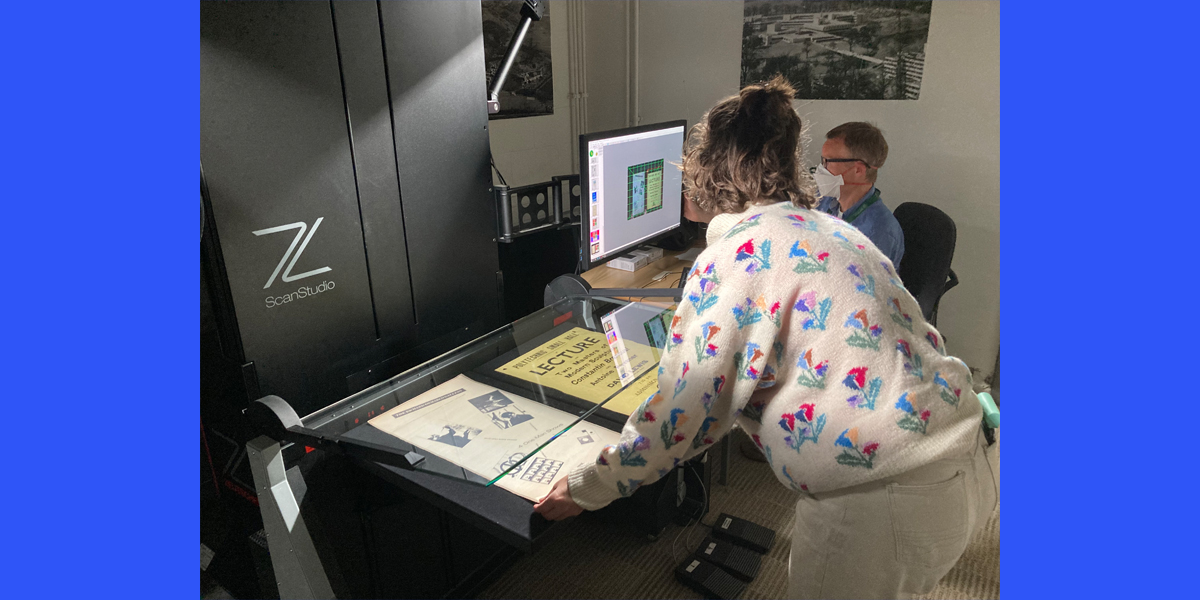
At ScanStudio at the University of Stirling
Poster Power
The range of posters in the collection spans from Barns-Graham’s first solo exhibition, Cornish Paintings, at Downing’s Bookshop in 1947 to the Trust’s recent 2023 collaboration with the Hatton Gallery, Paths to Abstraction. The collection is by-far from complete with many significant exhibitions not represented; the poster from the eponymous 1985 Tate exhibition, St Ives 1939-64: Twenty Five Years of Painting, Sculpture and Pottery, is absent for example (the library has 5 copies of the catalogue in comparison), as is the poster for the ICA’s exhibition Aspects of British Art which was designed in striking fluorescent colours by Graham Sutherland. Like the 1985 Tate exhibition, it was of great significance that Barns-Graham was included in the ICA exhibition, being shown among many other high profile artists of the time, including Henry Moore, Barbara Hepworth and Prunella Clough; and although she kept a catalogue, she failed to collect the poster. However, in places, the collection provides unique evidence of exhibitions Barns-Graham contributed to such as an undated exhibition at The Castle Inn, St Ives, called Modern Paintings and Drawings (WBG/3/191/1/1). Printed by Guido Morris of the Latin Press, it presumably dates to the mid-late 1940s.
View our poster collection online here
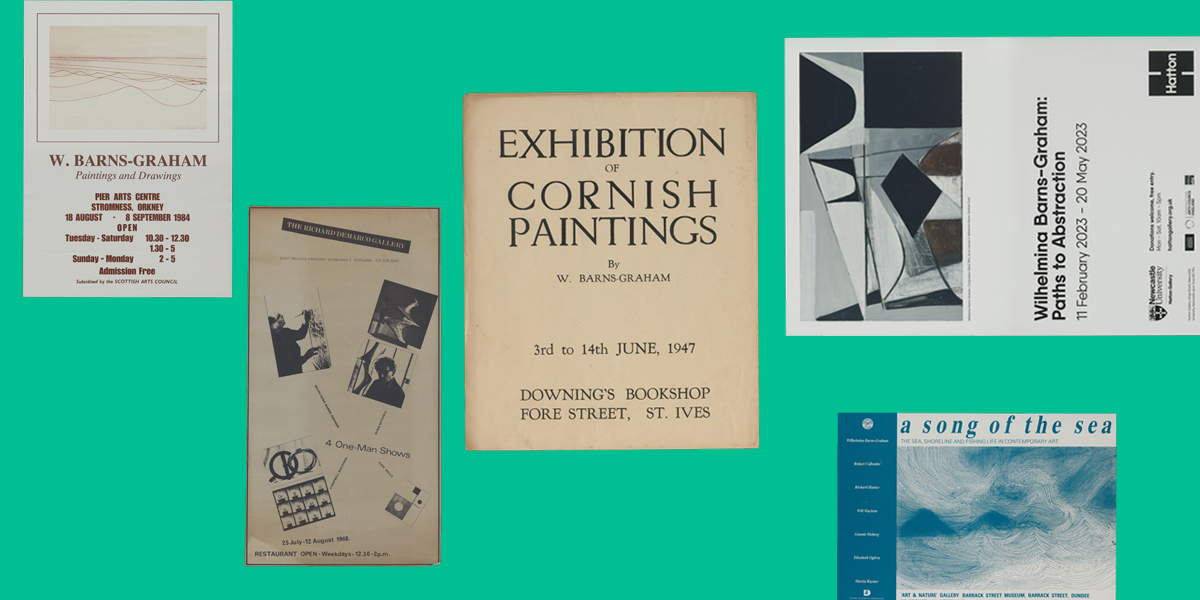
A selection of posters from the archives
Development in Design
As well as providing a vibrant visual record of her exhibiting history, the collection also provides an interesting overview of the development of poster graphic design in the 20th and 21st centuries.
In the immediate post-war years, and in stark contrast the eye-catching imagery of wartime propaganda, Barns-Graham opted to publicise her exhibitions with the elegant Bembo-typeset letterpress posters printed by Guido Morris, such as the one advertising her 1949 exhibition at Downing’s Bookshop, St Ives (WBG/3/7/1/8). Posters remain mainly text-based through to the 1970s, with bold screenprinted designs, such as the one for Barns-Graham’s joint exhibition with Roger Hilton at Bear Lane Gallery, Oxford, in 1968 (WBG/3/39/1/3). It’s only in the 1980s, with improvements to the offset lithography printing process, do we see reproductions of Barns-Graham’s artwork appear on posters, or example, Barns-Graham’s Drawings exhibition at Crawford Arts Centre, St Andrews (WBG/3/82/1/10).
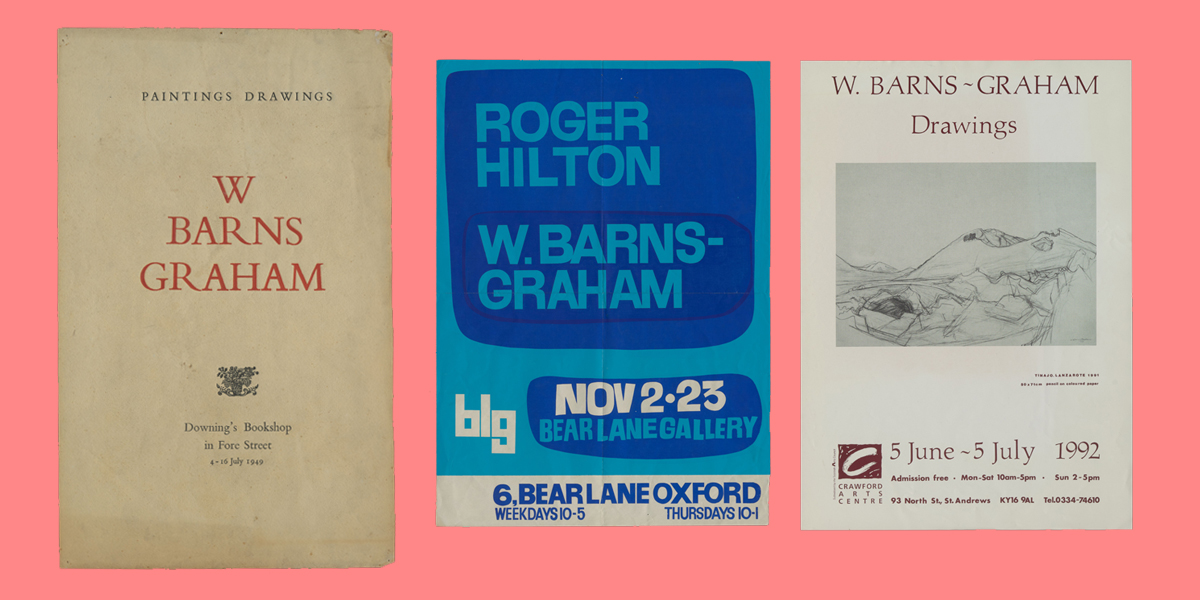
L to R: 1949 Downing's Bookshop, St Ives; 1968 Bear Land Gallery, Oxford; 1992 Crawford Arts Centre, St Andrews
Tried and Tested Design
By the 1980s, the majority of Barns-Graham’s exhibition posters were directed by Rowan James, her art manager, and followed a tried-and-tested formula of title and image with space for exhibition venue details below. The layout seems to be both a practical and economic decision; one print run of posters could be used for multiple venues of a touring exhibition. Specific site details were overprinted as required, as can be seen in the variations of Barns-Graham’s 1989-1990 Retrospective exhibition. It seems Rowan became quite the expert in poster printing and design. In correspondence with galleries held in our archive, she often provides advice to other galleries about printing.
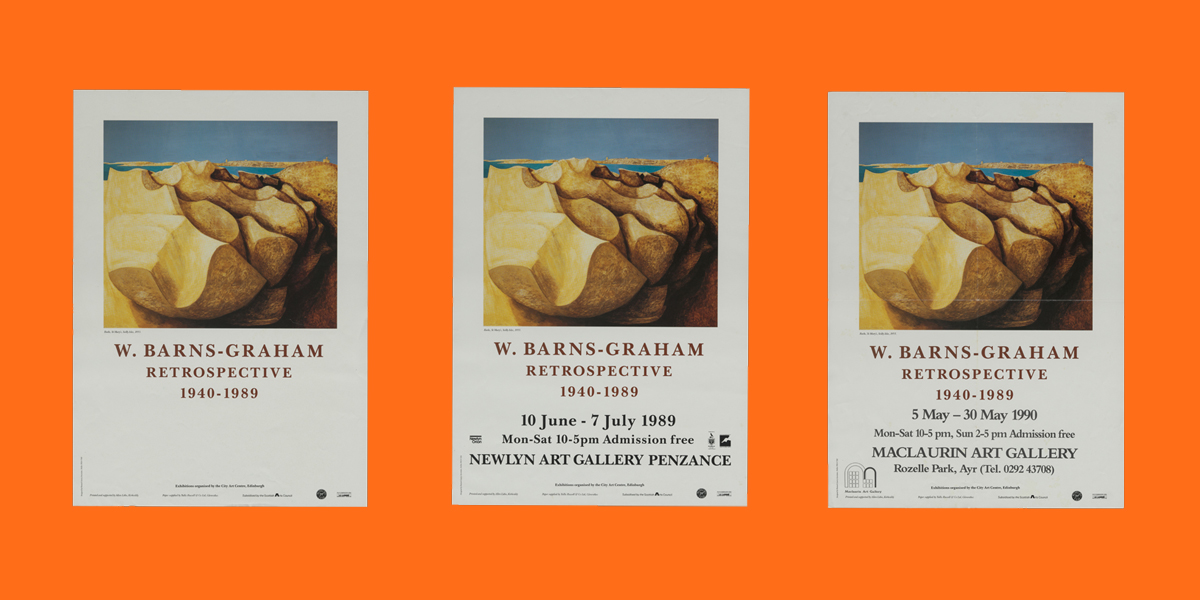
1989-1990 Retrospective Posters
Festival Exhibition 1981
Barns-Graham’s poster for 1981 Festival Exhibition (WBG/3/32/1/11) at the Scottish Gallery has evidently seen better days. However, its tattered nature suggests that she probably displayed proudly for some time (in a typically modest British fashion, many of Barns-Graham’s exhibition posters were displayed in the bathroom). Indeed, this was a significant exhibition for her, and received wide critical attention.
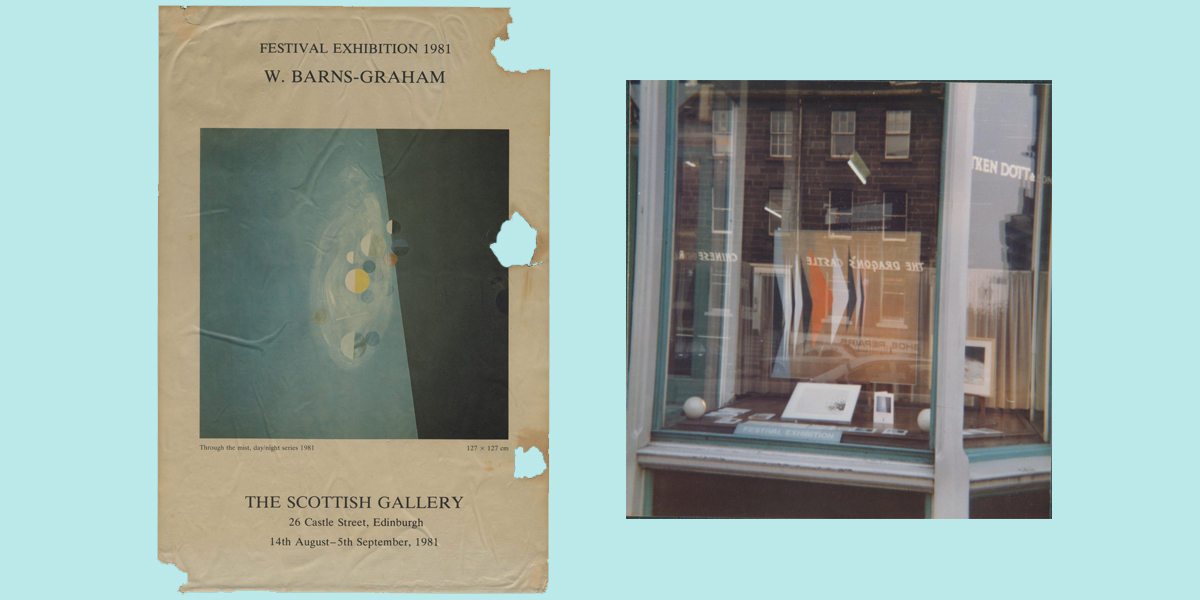
1981 Festival Exhibition poster and front window of the Scottish Gallery during the exhibition
Masters of Modern Sculpture
Barns-Graham’s poster collection also includes a small number of posters unrelated to her own exhibitions. One of these is an advertisement for a lecture by David Lewis (WBG/4/2/3/1), on the sculptors Constantin Brancusi and Antoine Pevsner, held at Falmouth Polytechnic. David Lewis (Barns-Graham’s husband between 1949 and 1960) was working as a curator for the Penwith Society of Artists, and as a freelance art critic during the 1950s, and often gave talks to supplement his income. During this period, he and Barns-Graham travelled to Paris to visit the studios of Pevsner, Brancusi and Hans Arp. Ben Nicholson provided introductions to Brancusi and Arp for the couple, and the visits proved to be incredibly inspirational for Barns-Graham, as she fondly recalled in her Reminiscences written between 1993 and 1996. Of Brancusi’s sculpture in his studio, she wrote:
“I went over the top with excitement as we tentatively looked around and my adrenaline so high I was saying emotional things like ‘They are God inspired!’ ‘If anyone is in touch with God this is it’ and so on. Brancusi silently appeared through the door opposite to the one we had come in!”
It is likely that this talk included some of what Lewis discovered while he was visiting the studio with Barns-Graham. In 1958, Lewis published a monograph on Brancusi’s sculpture.

L to R: Poster for a lecture by David Lewis on Brancusi and Pevsner; his book on Brancusi (1957); photo of WBG and David Lewis from mid-1950s
The Trust would like to thank the University of Stirling Archives and Collection for their generous support in digitising the poster collection in their ScanStudio.
